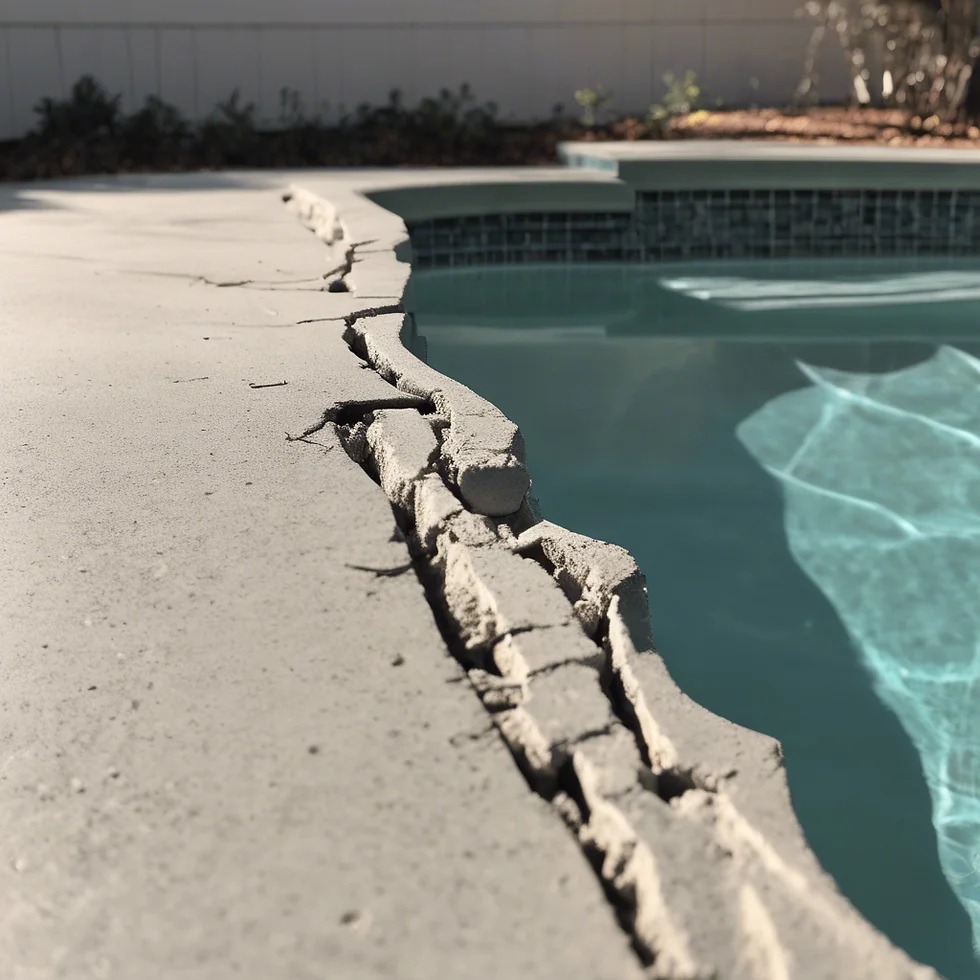Swimming pools are a great investment for any home, offering a relaxing space for recreation and exercise. However, over time, pools can develop cracks that affect both their appearance and structural integrity. Whether you’re dealing with minor surface cracks or more serious structural ones, addressing these issues promptly is crucial to maintaining the longevity of your pool. In this blog, we’ll dive into the types of swimming pool cracks, what causes them, how to repair them, and when to call a professional for help. We’ll also provide tips on how to prevent future cracks from forming.
Must Read: How to Stop Leaks from Pool Incoming Water Copper Pipes
Types of Swimming Pool Cracks

Image Credit – Vintage Cast
Before diving into repairs, it’s essential to understand the different types of swimming pool cracks. Not all cracks are the same, and the severity of the crack will determine the type of repair needed.
1. Surface Cracks
Surface cracks, also known as cosmetic or hairline cracks, are generally minor and only affect the outer layer of the pool. They often appear in the plaster, tile, or pebble finish and don’t necessarily compromise the pool’s structural integrity.
2. Structural Cracks
Structural cracks are more serious and occur in the underlying shell of the pool, typically made of concrete, gunite, or fiberglass. These cracks can lead to water leaks and further structural damage if left untreated. Structural cracks can run deep and may extend across the pool walls and floor, indicating a need for professional attention.
3. Settlement Cracks
Settlement cracks occur when the ground beneath the pool shifts or settles unevenly. This can cause both surface and structural cracks, depending on the severity of the ground movement. Pools built on unstable soil are especially prone to this type of damage.
What Causes Pool Cracks?
Several factors can lead to swimming pool cracks, such as ground movement and poor construction. Understanding these causes is key to preventing damage and addressing the need for timely pool renovation.
1. Ground Movement
Ground movement or soil shifting is one of the most common causes of structural cracks in swimming pools. Changes in the soil’s moisture content, seismic activity, or poor compaction during pool installation can result in cracks as the pool structure settles unevenly.
2. Temperature Fluctuations
Extreme temperature changes, particularly in climates with freezing and thawing cycles, can cause concrete and fiberglass pools to expand and contract. This repeated stress can weaken the pool’s materials over time, leading to cracks.
3. Poor Construction
Poorly constructed pools are more likely to develop cracks. Issues such as inadequate reinforcement, improper concrete mixing, or poor-quality materials can contribute to the pool’s vulnerability.
4. Water Chemistry Imbalance
An imbalance in the pool’s water chemistry, particularly the pH levels and calcium hardness, can cause pool materials to degrade. Low calcium levels can make the water aggressive and leach calcium from the pool’s surface, weakening it and leading to cracks.
5. Excessive Pressure
Excessive external pressure from the surrounding soil or internal water pressure can contribute to the formation of cracks. If the pool is empty for extended periods, hydrostatic pressure can build up from groundwater, causing the pool shell to crack.
How to Repair Swimming Pool Cracks
The method for repairing swimming pool cracks depends on the type and severity of the crack. Here are the most common repair techniques:
1. Repairing Surface Cracks
Surface cracks are generally easier to repair than structural cracks. Here’s how you can address these:
- Step 1: Clean the Area – Clean the cracked area using a wire brush or a grinder to remove any dirt, algae, or loose plaster.
- Step 2: Apply Epoxy or Pool Putty – Once the area is dry, apply pool putty or an epoxy filler specifically designed for pools. Follow the manufacturer’s instructions for mixing and application.
- Step 3: Smooth and Allow to Cure – After applying the filler, smooth it out using a putty knife and allow it to cure for the recommended time, usually 24-48 hours.
2. Repairing Structural Cracks
Structural cracks are more serious and often require professional intervention, but small cracks can sometimes be handled with these steps:
- Step 1: Drain the Pool – Before repairing a structural crack, drain the pool completely to access the damaged area.
- Step 2: Widen the Crack – Use a grinder or saw to widen the crack into a “V” shape. This allows the repair material to bond better with the crack.
- Step 3: Apply Hydraulic Cement – Fill the widened crack with hydraulic cement, which is designed to set underwater and provide a strong seal.
- Step 4: Use Epoxy Injection – For deeper cracks, an epoxy injection can be used to fill the voids and restore the structural integrity of the pool. This process typically involves injecting epoxy into the crack using a high-pressure system.
3. Fiberglass Pool Repairs
Fiberglass pools are less likely to crack, but if they do, the repair process involves:
- Step 1: Sand the Area – Use sandpaper to smooth out the cracked area and create a clean surface for bonding.
- Step 2: Apply Fiberglass Repair Kit – Use a fiberglass repair kit, which typically includes resin and fiberglass cloth, to patch the crack. After applying the resin, lay the cloth over the area and smooth it out.
- Step 3: Sand and Finish – Once the patch has cured, sand the area again to smooth it, and apply a gel coat to match the pool’s original finish.
When to Call a Professional
While small surface cracks can often be repaired by homeowners, larger structural cracks require professional assistance. If you notice significant water loss, shifting, or multiple cracks, it’s best to consult a professional swimming pool contractor for expert repairs.
- Water Loss – Significant water loss from your pool may indicate a leak caused by a structural crack.
- Shifting or Sagging – If your pool appears to be shifting or sinking, this could be a sign of severe structural damage.
- Multiple Cracks – If your pool has multiple cracks or the cracks continue to grow despite repair attempts, it’s time to call in a professional.
- Unstable Ground – If your pool was built on unstable or expansive soil, ground movement could cause major structural problems that require specialized repairs.
Tips to Prevent Future Swimming Pool Cracks
Preventing swimming pool cracks is easier and more cost-effective than repairing them. Here are some tips to help you maintain the integrity of your pool:
- Monitor Water Chemistry – Regularly test and balance your pool’s water chemistry to avoid corrosion or deterioration of the pool’s materials.
- Maintain Water Levels – Keep the pool filled to the appropriate level to prevent unnecessary pressure on the walls and floor.
- Ensure Proper Drainage – Make sure that water is draining away from the pool area to reduce hydrostatic pressure and soil erosion.
- Perform Regular Inspections – Inspect your pool regularly for signs of wear and tear, such as small cracks, and address issues before they worsen.
- Control Ground Movement – If your pool is built on expansive soil, consider using soil stabilization techniques, such as injecting grout or lime, to minimize ground movement.
Conclusion
In conclusion, repairing swimming pool cracks promptly is essential to maintaining both the appearance and structural integrity of your pool. Whether dealing with minor surface cracks or more serious structural damage, addressing these issues early can save you time and money. For expert advice and quality pool repair, consider contacting the Best Pool Builder in Austin, Texas, known for their expertise in both pool construction and long-term maintenance solutions. Regular care will ensure your pool remains in top condition for years to come.

